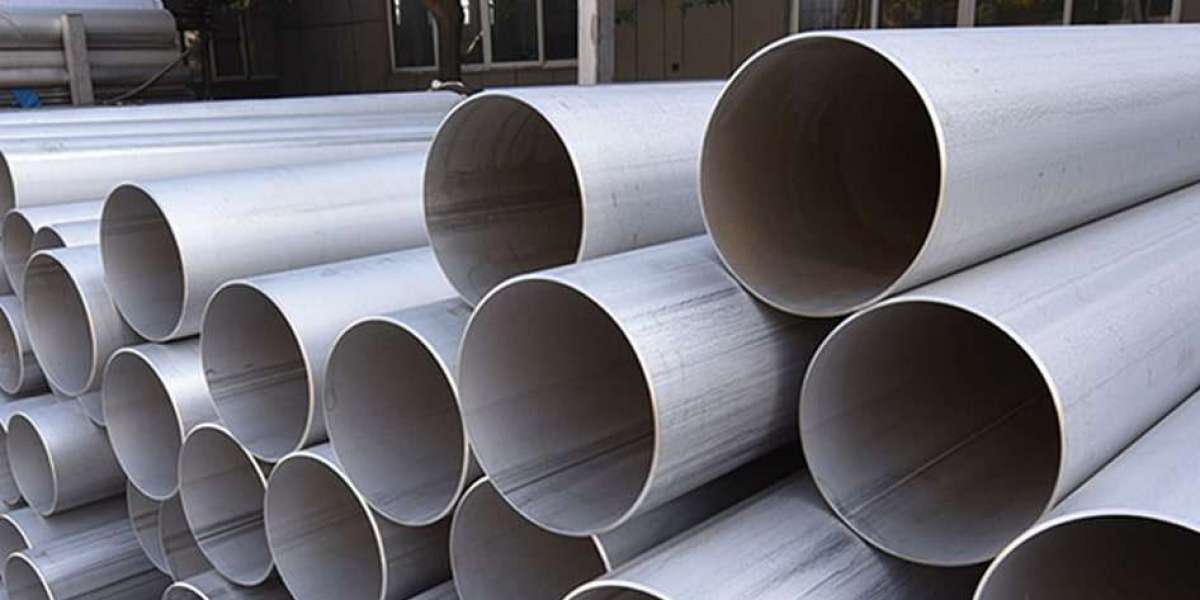316L stainless steel welded pipes are a critical component in numerous industries due to their excellent corrosion resistance, durability, and strength. These pipes, made from 316L stainless steel, are low-carbon variants of the standard 316 grade, designed for superior performance in environments prone to corrosion and high temperatures.
In this article, we’ll explore the features, benefits, manufacturing processes, and diverse applications of 316L stainless steel welded pipes, offering insights into why they are a top choice for industrial and commercial projects.
What is a 316L Stainless Steel Welded Pipe?
316L stainless steel welded pipes are fabricated by welding together flat sheets or strips of 316L stainless steel. This process creates pipes that are strong, durable, and resistant to corrosion. The “L” in 316L signifies its low carbon content, reducing the risk of carbide precipitation and enhancing its weldability.
Key components of 316L stainless steel include:
- Chromium (16–18%): Provides corrosion resistance.
- Nickel (10–14%): Adds strength and resistance to high temperatures.
- Molybdenum (2–3%): Increases resistance to pitting and crevice corrosion.
Key Features of 316L Stainless Steel Welded Pipes
Exceptional Corrosion Resistance
These pipes perform exceptionally well in environments with chlorides, acids, and saltwater exposure, making them ideal for marine, chemical, and industrial applications.Low Carbon Content
The low carbon composition reduces carbide precipitation during welding, maintaining excellent corrosion resistance in welded areas.High Strength and Durability
316L stainless steel welded pipes are robust and withstand high pressures, temperatures, and mechanical stress.Aesthetic Finish
Their polished surface makes them suitable for decorative and architectural purposes.Eco-Friendly
316L stainless steel is fully recyclable, aligning with sustainable industrial practices.
How 316L Stainless Steel Welded Pipes are Made
The manufacturing process of 316L stainless steel welded pipes involves several key steps:
Material Selection
High-grade 316L stainless steel sheets or strips are selected based on the required specifications.Forming
The steel sheets are rolled into cylindrical shapes using advanced forming equipment.Welding
Edges of the steel are fused together using welding methods such as TIG (Tungsten Inert Gas) or laser welding to ensure strong, leak-proof joints.Heat Treatment
Pipes undergo annealing to enhance corrosion resistance and mechanical properties.Surface Finishing
The pipes are polished or given a brushed finish based on their application requirements.Testing and Inspection
Pipes are rigorously tested for leaks, strength, and quality to ensure compliance with industry standards like ASTM and ISO.
Applications of 316L Stainless Steel Welded Pipes
316L stainless steel welded pipes are versatile and used across a variety of industries:
Chemical Processing Plants
The pipes can transport corrosive chemicals without degradation, ensuring safety and reliability.Marine Industry
Their resistance to saltwater corrosion makes them essential for shipbuilding, offshore platforms, and underwater pipelines.Food and Beverage Processing
These pipes maintain hygiene standards and resist contamination, making them suitable for transporting liquids and gases in food processing plants.Pharmaceutical Industry
Their smooth surfaces and corrosion resistance are ideal for clean environments requiring sterile operations.Oil and Gas Sector
316L pipes are used for high-pressure applications and in environments with aggressive chemicals.Architectural Applications
Their aesthetic appeal and strength make them a popular choice for railings, facades, and structural elements in modern architecture.Water Treatment Plants
They are used for transporting treated water, brine, and other chemicals in water treatment systems.
Advantages of Using 316L Stainless Steel Welded Pipes
Superior Performance in Harsh Environments
These pipes are designed to endure extreme conditions, including chemical exposure, high temperatures, and saline atmospheres.Long Service Life
With proper maintenance, these pipes offer a long lifespan, reducing replacement costs.Low Maintenance
Their corrosion resistance ensures minimal upkeep, making them cost-effective over time.Recyclability
The eco-friendly nature of stainless steel makes it a sustainable choice for industries.Hygienic Properties
The non-reactive and smooth surface prevents contamination, making them ideal for applications where cleanliness is paramount.
Factors to Consider When Selecting 316L Stainless Steel Welded Pipes
When choosing the right pipe for your project, consider:
Application Requirements
Evaluate the environment where the pipe will be used, including exposure to chemicals, pressure, and temperature.Size and Dimensions
Ensure the diameter, wall thickness, and length meet your project specifications.Industry Standards
Look for compliance with ASTM, ISO, or other relevant standards to guarantee quality.Surface Finish
Choose between polished, brushed, or matte finishes depending on the aesthetic and functional needs of your project.
Maintenance Tips for 316L Stainless Steel Welded Pipes
To maximize the performance and lifespan of your 316L stainless steel welded pipes, follow these maintenance practices:
Regular Cleaning
Clean the pipes with mild detergents or stainless steel cleaners to remove dirt and prevent staining.Inspect for Damage
Periodically check for cracks, leaks, or corrosion, especially in highly corrosive environments.Protect Against Abrasion
Avoid excessive abrasion or impacts that could damage the surface or weaken the structure.Avoid Prolonged Chloride Exposure
While resistant, excessive exposure to chlorides over time can cause pitting.
Why Choose 316L Stainless Steel Welded Pipes?
Choosing 316L stainless steel welded pipes ensures that your projects benefit from a material that is both robust and versatile. Their ability to withstand challenging environments makes them a preferred choice for industries requiring reliability and efficiency.
Conclusion
316L stainless steel welded pipes are a durable, corrosion-resistant, and versatile solution for numerous industrial and commercial applications. From chemical plants and marine installations to architectural projects, these pipes deliver unmatched performance and longevity.
Whether you are looking for a reliable material for transporting corrosive chemicals or an aesthetically appealing option for structural designs, 316L stainless steel welded pipes provide a high-quality solution.








